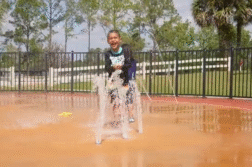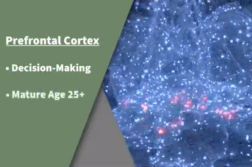PHOENIX, Ariz. (Ivanhoe Newswire) — Oncologists at Phoenix Children’s Hospital say nausea and vomiting disturbs families most when their kids are getting chemo. After one particularly distressing instance, a doctor reached out to the technology department, teaming up to get the right anti-nausea drugs to kids.
A team of doctors, IT experts, and pharmacists at Phoenix Children’s Hospital wanted to make chemo less horrible for kids. The new chemotherapy induced nausea vomiting, or CINV dashboard is making that happen.
“It’s real- time actionable electronic data that is not entered by a research coordinator, that is just a byproduct of the care that you’re giving,” said Vinay Vaidya, MD, Chief Medical Officer, IT Services at Phoenix Children’s Hospital.
Doctors now have information on the best anti-emetics for specific chemo drugs at their fingertips, every morning.
Lexa Walsh, MD, MSPH, a Pediatric Oncologist at Phoenix Children’s Hospital said, “There’s a group of us who reviews it and makes sure that the right combination of drugs is ordered, and I’ve noticed a huge difference, much more rare now that patients are struggling with nausea and vomiting.”
Nurses ask patients to report their nausea on a scale, which is also recorded in the dashboard.
Melissa Rees, a clinical pharmacist, said, “It helps us up front to make sure that we’re prescribing it adequately, but then on the back end, it also helps us to see how our preventative measures are actually helping.”
Doctor Walsh says families may have access to the dashboard someday, creating a full team of people helping kids not get sick while they’re getting well.
Doctor Walsh says Phoenix Children’s is sharing the CINV dashboard idea and its early results with other hospitals. It also now is collecting a lot more data on chemo drugs and anti-emetics which is another benefit.
Contributors to this news report include: Cyndy McGrath, Supervising Producer; Wendy Chioji, Field Producer; Roque Correa, Editor; Bruce Maniscalco, Videographer.
Free weekly e-mail on Medical Breakthroughs from Ivanhoe. To sign up: http://www.ivanhoe.com/ftk
MEDICAL BREAKTHROUGHS
RESEARCH SUMMARY
TOPIC: PREVENTING NAUSEA IN YOUNG CANCER PATIENTS
REPORT: MB #4660
BACKGROUND: Nausea and vomiting are common side effects of cancer treatment and often occur together. About one-half of people treated for cancer will feel sick to their stomach or will throw up. There are four types of nausea and vomiting. Acute nausea or vomiting occurs several minutes to a few hours after treatment is given and it often goes away within the first 24 hours. Delayed nausea or vomiting develops more than 24 hours after treatment is given. It can last for six to seven days. Chronic nausea and vomiting is not related to treatment. It is caused by the effect that the cancer waste products have on the body or by the location of the tumor in the body.
TREATMENT: The effects of chemotherapy vary with each child and the dose they receive. A medicine that makes one child very ill often has no effect on another child. Because the effects vary so much, how to manage nausea and vomiting also varies from one child to another. There are a few tips for parents to help children with nausea. This includes giving them small sips of drinks throughout the day, providing them with flat lemonade and commercial glucose drinks such as Lucozade, diluting certain drinks with water, and using a lid and straw on cups to make smells less noticeable.
(Source: kidshealth.org.nz/nausea-and-vomiting-due-chemotherapy)
NEW TECHNOLOGY: Lexa Walsh, MD, MSPH, a Pediatric Oncologist at Phoenix Children’s Hospital said, “I’ve noticed a huge difference since we’ve started the dashboard. And right now we’re collecting data on how to get more numbers of how it’s actually helping. But I really feel like our providers are all really tuned to giving the appropriate anti emetic regimen.” The scale that is used is called PeNAT, or pediatric nausea assessment tool. Dr. Walsh explained the dashboards multiple inputs, “It takes information from the nurses, from the medical record, from the pharmacy data and pulls it all together so you can look at it at one time. It’s unique. It makes a more complicated system a little bit easier to understand.”
(Source: Lexa Walsh, MD, MSPH)
FOR MORE INFORMATION ON THIS REPORT, PLEASE CONTACT:
Elaina Steingard
602-933-0824
esteingard@phoenixchildrens.com
If this story or any other Ivanhoe story has impacted your life or prompted you or someone you know to seek or change treatments, please let us know by contacting Marjorie Bekaert Thomas at mthomas@ivanhoe.com




